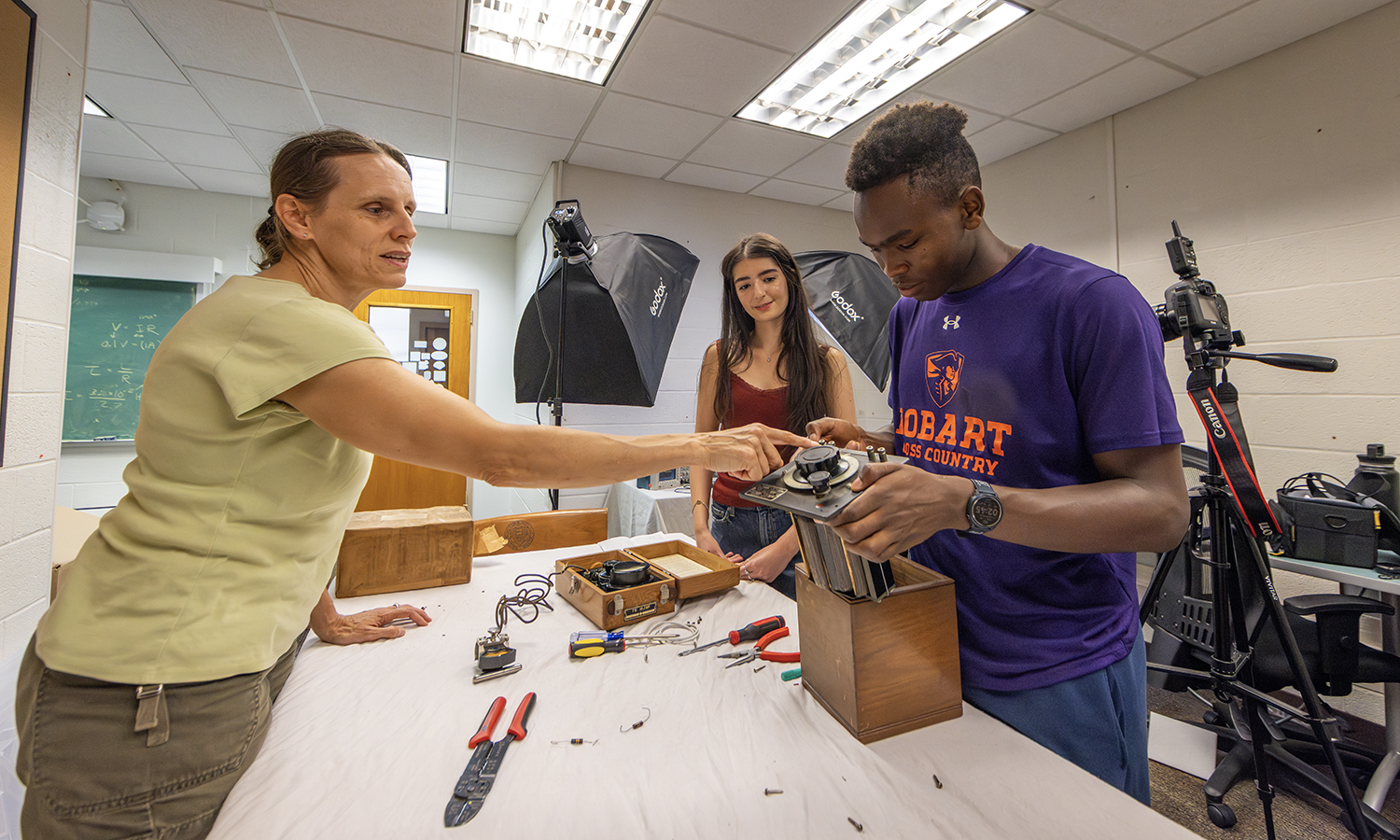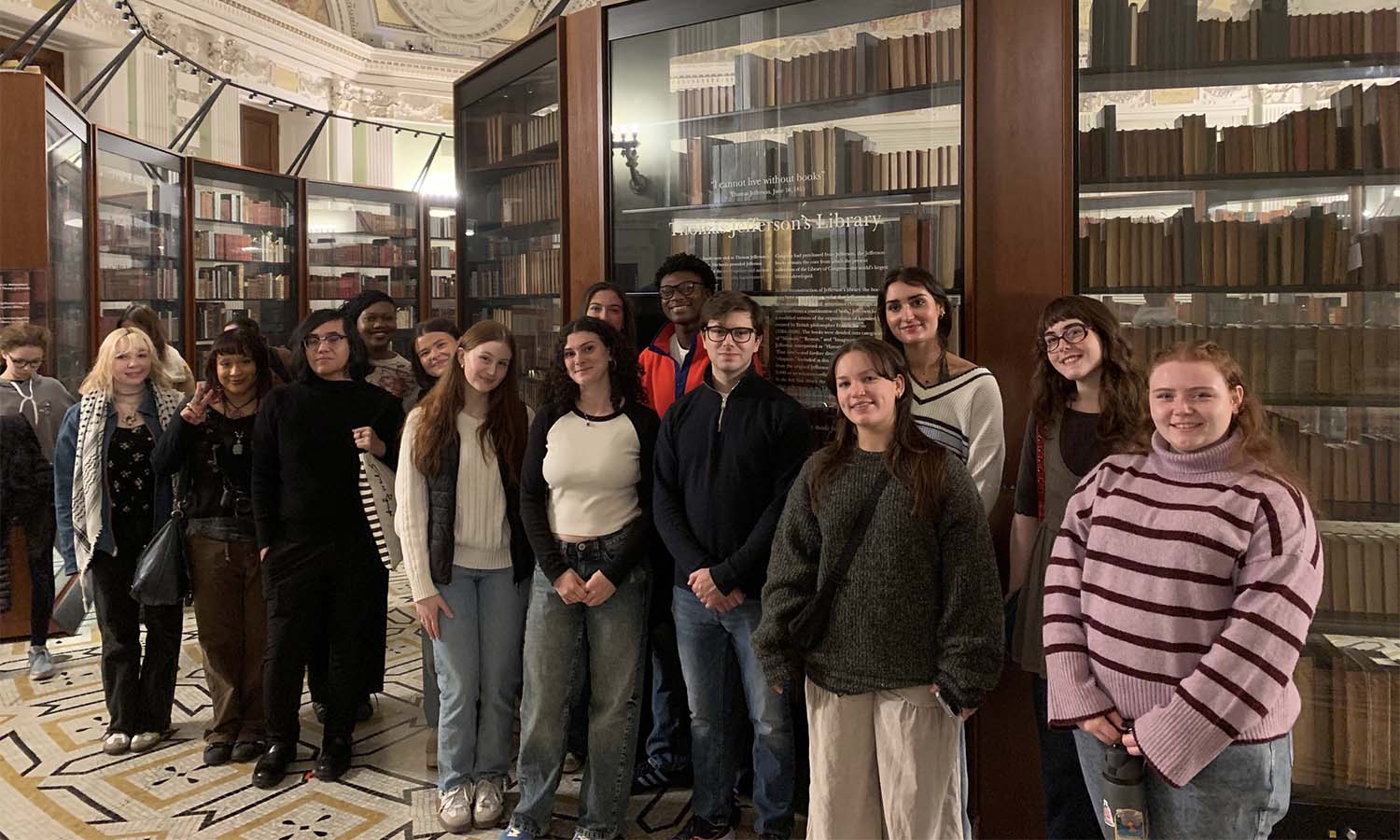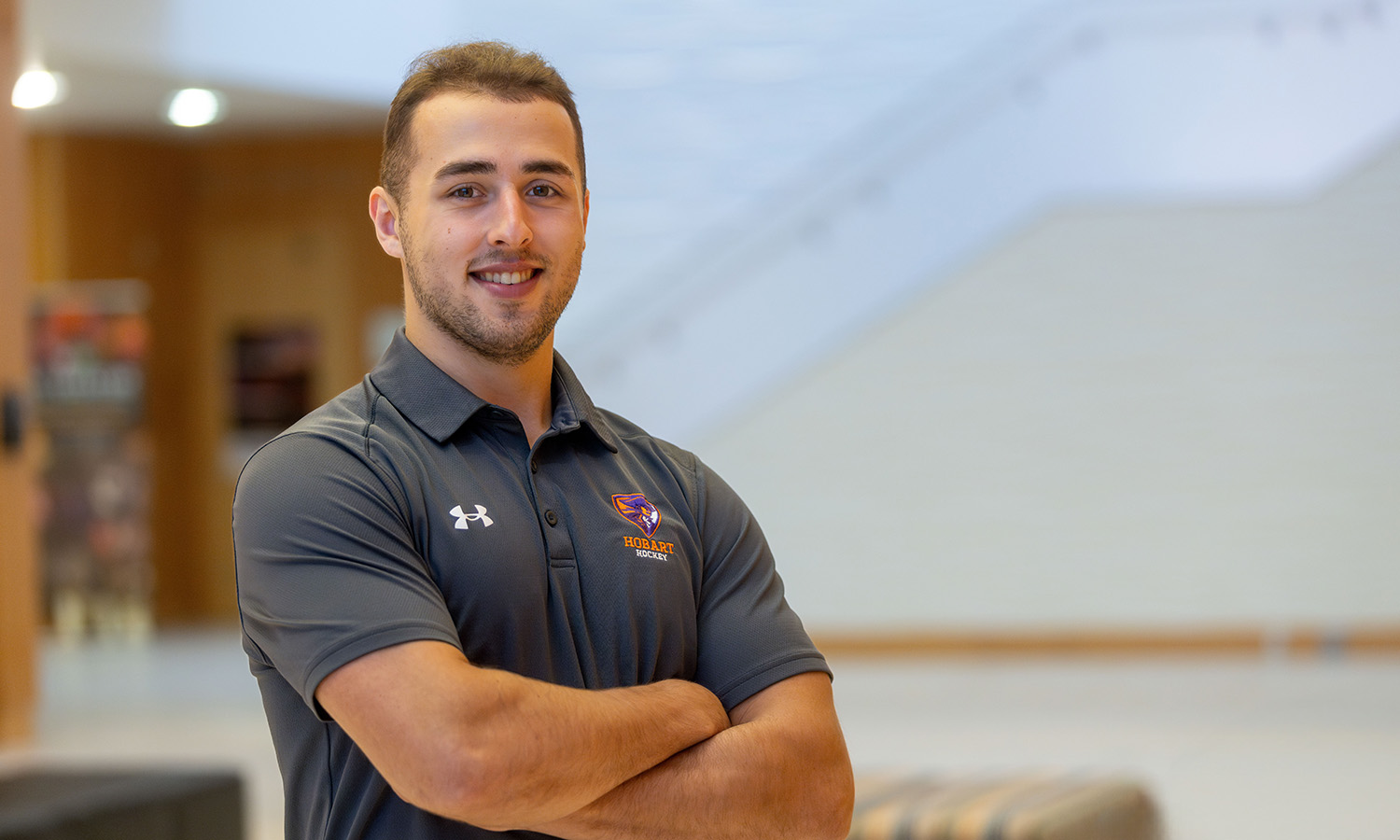
HWS News
25 July 2025 • Research Magnetic Fields and Military Secrets: Summer Research with a Twist
Students blend physics, history and art to create a digital archive of vintage scientific equipment pulled from Eaton Hall’s hidden archives.
When Nina Lopes ’28, a biochemistry major on the pre-med track, applied to conduct summer research, she wasn’t expecting to open a sealed package from 1945 or dive deep into World War II-era technology. She ended up doing both within the first week.
Among the standout items from her first week was finding a flux meter, an instrument used to detect magnetic fields, which came with an original instruction manual. “The manual said that information of the technology was only allowed for the United States and only allowed to be seen or shared with people working for the United States,” Lopes says. “We found that very interesting.”
Under the guidance of Professor of Physics Leslie Hebb, Lopes and Duncan Kipkoech '28, a computer science and chemistry double major, are exploring the history of science through vintage laboratory equipment stored in Eaton Hall’s cabinets and storerooms before the building is removed to make way for the new integrated science center, the Fish Center for the Sciences, slated for construction in January.
Much of the equipment they are uncovering comes from physics—mechanics, electronics, optics and thermodynamics—reflecting the evolution of teaching and research across decades.
The flux meter, as Lopes learned, had military applications during World War II. “Submarines had become a thing then,” she says. The Germans placed magnetic mines on the ocean floor that would react to the magnetic field in passing ships. To stop the metal ship from detonating mines, the ships magnetic field had to be neutralized, a process called degaussing. The flux meter was an instrument used to provide real-time measurements of the ship’s magnetism so that it could be canceled out, Lopes explains.
“Their work is a liberal arts project looking at the history of scientific laboratory equipment—a combination of science, history and art,” Hebb says. As part of the project, Kipkoech and Lopes are creating a digital archive and exhibit of the relics as they research their origin and function and photograph or film the instruments.
In addition, Kipkoech says, they are testing the equipment and determining whether they’re still functional. He gives the example of the 1940s-manufactured variable inductor.
The physics of induction and variable inductors, he says, were used in wireless radio equipment to aid communication on specific frequencies. This allowed World War II soldiers to communicate without the enemy eavesdropping or intercepting messages.
“On the outside, it looks like a wooden box with a metal slate, screws and two rotating knobs on top. In the inside, it is a complex inductor, having several coils around copper and iron rods. Turning the knobs alters the position of the coils which causes a change in the magnetic permeability thus varying the inductance of the inductor,” Kipkoech explains.
Kipkoech is creating an online exhibit to record the findings. The process, he says, is exercising his writing and coding skills and giving him hands-on experience documenting research.
“I have managed to unlock a new interest in how the application of physics was key to developing most of the 20th century electronics. With the World Wars and the technological eras emerging in that century, physics knowledge was used to engineer the necessary tools,” he says.
Lopes adds their project’s significance extends beyond the lab. “I think it’s important to highlight the necessity of knowing our past before we move forward… We’re always pushing so hard for the newest and best thing, but sometimes vision can get clouded, and we don’t realize what we’re leaving behind.”



